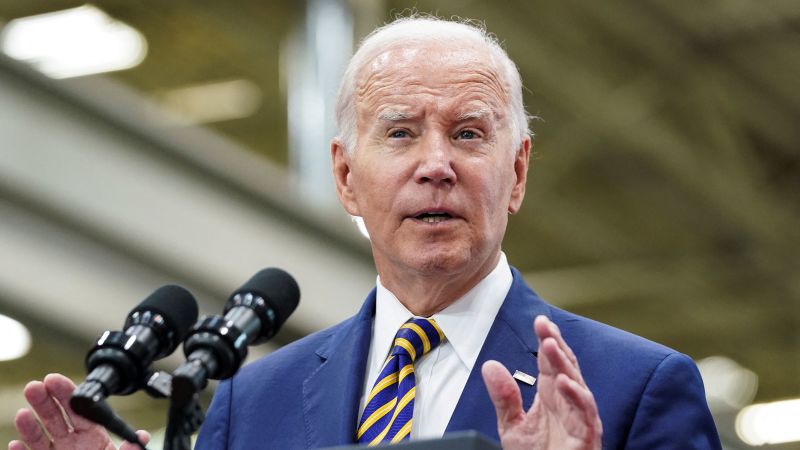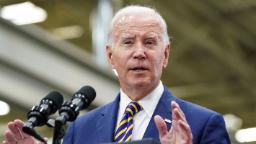CNN
—
On a Tuesday morning in August, a memo landed on President Joe Biden’s desk warning of the possibility of a storm hitting Hawaii.
The August 8 memo was part of a daily summary focused on potential extreme weather facing the US based on public data, which the president started receiving from his homeland security team after the Western wildfires in the summer of 2021. It warned of high winds hitting Hawaii and the Federal Emergency Management Agency, following their usual protocols, deployed personnel to the state in anticipation of the storm.
Hours later, the islands were dealing with a different crisis: A wildfire. After the fires began, White House Chief of Staff Jeff Zients immediately briefed the president on what became a rapidly evolving situation, according to White House officials.
“What was not anticipated at that time, when we first reported on the possibility of a storm with high winds, was that they would ignite a major fire or fires,” a senior White House official directly involved told CNN, adding that FEMA funds were provided as soon as the blazes began to help with fire management.
The full scope of the devastation is still coming into focus, as residents sort through the rubble and ashes, and search for loved ones. At least 111 people have died.
And on Monday, Biden will see the damage up close when he visits Maui. Ahead of his trip, the president, who faced criticism in the immediate aftermath, committed to deploying “every asset” the state needs for ongoing recovery efforts.
“You always hear this phrase – and I’ve been to so many disasters in my career, it’s almost hollow – but our prayers, our thoughts and prayers are with the people of Hawaii. But not just our prayers: Every asset, every asset they need will be there for them. And we’ll be there in Maui as long as it takes, as long as it takes, and I mean that sincerely,” Biden said at an event in Milwaukee earlier this week.
The Tuesday remarks were Biden’s first public comments about the unfolding disaster in Hawaii since five days before, when he similarly began a prescheduled speech addressing the devastation. The period of silence had not gone unnoticed by Biden’s critics, including former President Donald Trump and other Republicans. Some residents have also grown frustrated with what they’ve described as not enough of a federal response.
Hawaii Democratic Sen. Mazie Hirono praised Biden’s response, saying in a tweet this week that the president and his administration “have been incredibly helpful.”
“I’m glad to see so many on the right are so concerned about what’s happening in Hawaii though,” Hirono added. “I look forward to them supporting the robust federal funding our state will need.”
But White House aides have stressed that the president was regularly briefed on the situation over the course of that first day and had frequent calls with top officials, including Hawaii’s governor and Hawaii’s congressional delegation. FEMA leadership was also in touch with state and local officials as the fires ripped through Maui.
“As we were watching the fires that were starting, and we were issuing the Fire Management Assistance Grants, which is one of the first things we do with fires like this, our team that is already on the island immediately started to integrate in with the state staff,” FEMA Administrator Deanne Criswell told CNN.
“We started to see what the conditions were and, especially after my conversation with the lieutenant governor that I had on Wednesday when we really understood what the full impact potential was going to be, then we were able to start moving additional resources,” Criswell said, adding that FEMA already had a distribution center in the state.
Within the administration, a White House official told CNN, there have been multiple staff calls each day focused on response and recovery. Criswell, who surveyed the damage last weekend, regularly briefed Biden and will be traveling with the president to Maui on Monday.
There are more than 600 federal personnel on the ground in Maui coordinating ongoing disaster efforts. The administration has also provided thousands of meals, liters of water, blankets and cots. FEMA has also provided more than $2.3 million in assistance, according to White House press secretary Karine Jean-Pierre. Biden also approved a full reimbursement to Hawaii for 30 days’ worth of emergency services.
The US Coast Guard, Navy Third Fleet and US Army are also supporting recovery efforts on the island, disaster loans are being made available, the US Department of Defense has been helping move supplies across the steps, and the Small Business Administration is making low-interest federal disaster loans available to those impacted.
While focus remains on search and rescue and later, debris removal, Cabinet and senior administration officials also met at the White House with Homeland Security Adviser Elizabeth Sherwood-Randall this week to chart a path forward on other issues like housing and the making the state’s energy grid more resilient with the help of the Department of Energy, according to a senior White House official directly involved.
“We’re going to have to put every solution on the table to make sure that we’re creative in thinking through what the recovery needs are going to be in a remote area like Hawaii,” Criswell said.
This story has been updated to include revised timeline information from the White House.

